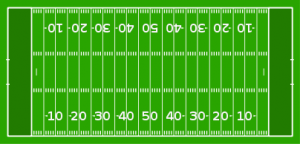 One of the biggest misconceptions that new clients have about the profession coaching process is that their coach is going to give them advice or tell them what to do. In order to illustrate how the process really works, let’s use the GROW model to compare a moment in the coaching process to a single during a football game. If you’re not familiar with the GROW model, it breaks down as follows:
One of the biggest misconceptions that new clients have about the profession coaching process is that their coach is going to give them advice or tell them what to do. In order to illustrate how the process really works, let’s use the GROW model to compare a moment in the coaching process to a single during a football game. If you’re not familiar with the GROW model, it breaks down as follows:
- Goal – Where the client wants to be
- Current Reality – Where the client is now
- Obstacles and Options – Real and imagined forces holding the client back and ways around them
- Way Forward – A strategy for moving toward the client’s goal in the immediate future
Find Out Where They Want to Throw the Ball
For the purpose of our illustration, let’s imagine it’s third down early in the second half and the client has the ball with bad field position six feet from first down. As the coach, we’re only asking questions, so we start off by asking where the client wants to be. While the obvious long term goal is the in-zone, we might have to ask a couple clear questions to make it clear that his field position, or current reality, is a long way from a touchdown. Given the circumstances, it’s time to work on finding the best way forward in the next play.
Use Questions to Help the Choose the Best Play
Like a coach trusting his quarterback, we trust that our client can see the best way forward is go for a first down, but we’ll still ask him where he wants to go because he’s the one with the ball. Assuming we’re right, the next step is to ask him about his obstacles and options, or, in this case, the defense and his teammates.
This is where it becomes clear that only our client is in a position to call the play. He’s been up against this team before and knows his teammates well. Sitting from the sidelines, it’s impossible for us to know the best way forward, even if we’ve been in a similar situation in the past. Instead, we’ll use a series of insightful, probing questions about the situation out there and which of his options are most likely to get the ball down the field.
By the end of the process, the client decides which play is right for him and gets the ball to the perfect player to make a solid ten yard gain. It wasn’t a touchdown, but he made the right play at right moment on his own. Now all we do is ask him what he wants to do next.